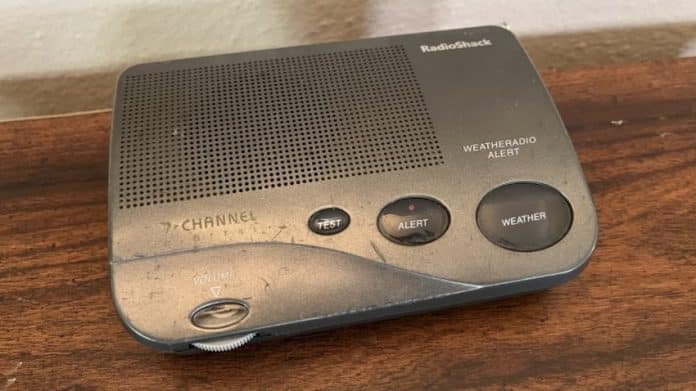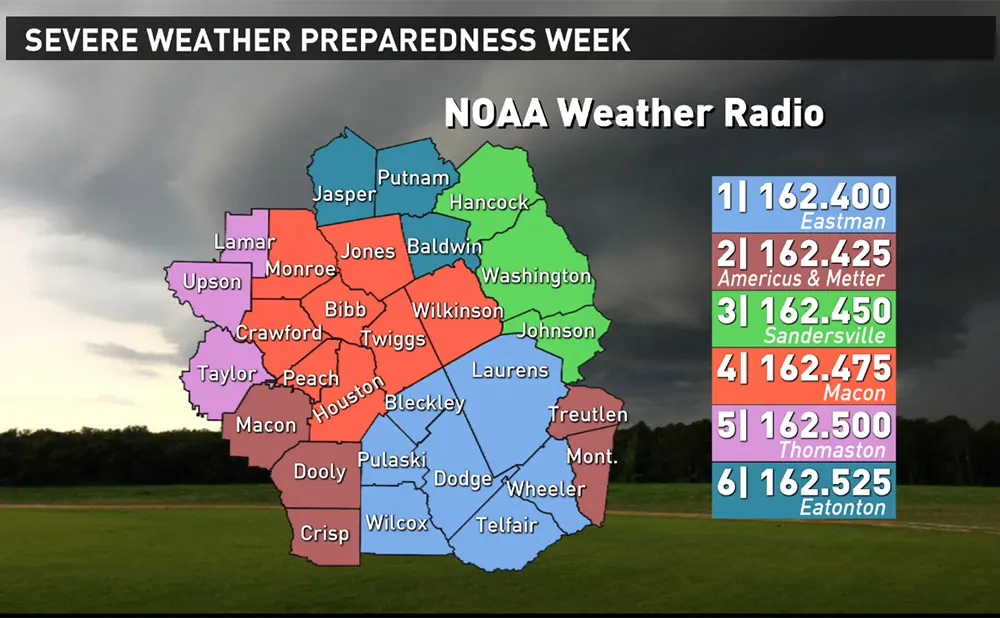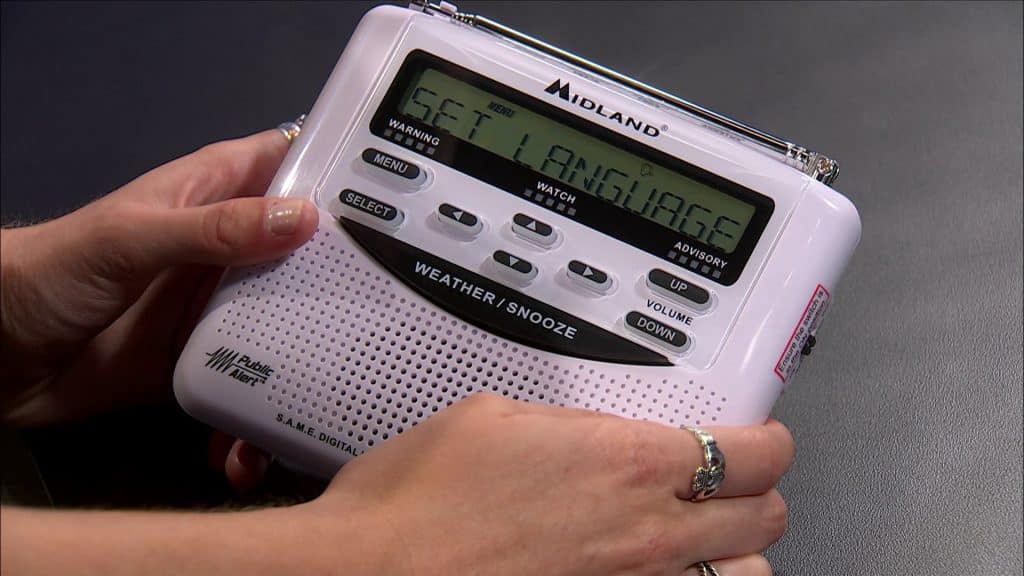Are you unsure what frequency to set your weather radio to? This is a common question among those who want to stay updated on weather conditions and ensure their safety.
But fear not—we’re here to help! This article provides the essential information you need to determine the appropriate frequency for your weather radio.
By understanding the factors influencing frequency selection, you’ll be well-equipped to choose and receive accurate and timely weather alerts.
So, let’s get started!
Factors to Consider
1. Location
When setting the frequency for your weather radio, one crucial factor to consider is your location. The weather conditions and the hazards you may face can vary greatly depending on your location.
Different regions may experience weather patterns like hurricanes, tornadoes, or winter storms. Therefore, it is crucial to choose a frequency that corresponds to the specific weather conditions in your area.
2. NOAA Weather Radio Frequency
The NOAA Weather Radio is essential for receiving weather alerts and updates. It operates on specific frequencies that are dedicated to weather information.
The NOAA Weather Radio frequency ranges from 162.400 MHz to 162.550 MHz. Multiple channels are available within this range, each covering a specific area. Selecting the appropriate frequency to ensure you receive accurate and timely weather information is essential.
3. Broadcast Range
Another factor to consider when setting the frequency for your weather radio is the broadcast range. The broadcast range refers to the distance the weather radio signal can travel and be received effectively.
The range can vary depending on factors such as the power of the transmitter and the terrain of the area. If you live in a rural or mountainous area, you may need a weather radio with a more extended broadcast range to ensure reliable reception.
Weather Radio Frequencies
1. VHF
The Very High Frequency (VHF) band is commonly used for weather radio communication. VHF frequencies range from 30 MHz to 300 MHz.
Regarding weather radio, the VHF band is primarily utilized for NOAA Weather Radio broadcasting. This band is preferred because it can transmit signals over long distances, making it ideal for public safety communications.
2. UHF
The Ultra High Frequency (UHF) band is another option for weather radio frequencies. UHF frequencies range from 300 MHz to 3 GHz.
While UHF is commonly used for other forms of radio communication, such as television broadcasting and mobile phone networks, it is less commonly utilized for weather radio transmission.
However, in some cases, UHF frequencies may be used for weather radio broadcasts, particularly in areas where VHF frequencies are unavailable or may experience interference.
3. Specific Frequencies
Within the VHF band, the specific frequency range allocated for NOAA Weather Radio broadcasts is 162.400 MHz to 162.550 MHz. These frequencies are divided into multiple channels covering a designated geographic area.
The channels within this range are numbered from 1 to 7, each covering a specific region. Determining which channel corresponds to your area is essential to ensure you receive accurate and localized weather information.
Choosing the Right Frequency
1. Determine the Availability
Before setting the frequency for your weather radio, it is crucial to determine the availability of the channels in your area.
To obtain a list of available frequencies and the corresponding channels, consult the NOAA Weather Radio website or local weather authorities.
By verifying the frequencies’ availability, you can ensure that your weather radio is tuned into the correct channel and receives accurate weather updates.
2. Determine the Range
Another essential aspect to consider when selecting the frequency for your weather radio is the range of the signal. Different weather radios have varying broadcast ranges, and choosing a frequency to broadcast signals within the desired reception range is essential.
The range is particularly crucial for individuals residing in rural or mountainous areas, where the signal strength may vary due to geographical factors. By choosing a frequency with the appropriate range, you can ensure reliable reception of weather updates.
3. Verify Local Regulations
When setting the frequency for your weather radio, verifying local regulations regarding using specific frequencies is essential. Certain frequency ranges or channels may be reserved for specific purposes or restricted in certain areas.
By familiarizing yourself with the local regulations, you can ensure that you comply with the rules and maximize the effectiveness of your weather radio.
NOAA Weather Radio Channels
1. All Hazards Weather Radio
The NOAA Weather Radio is often called the “All Hazards Weather Radio” because it provides weather information, critical alerts, and warnings for various hazardous situations.
These alerts can include severe weather warnings, such as tornadoes, hurricanes, thunderstorms, and other emergencies like chemical spills or civil emergencies.
By tuning in to the appropriate NOAA Weather Radio channel, you can receive real-time updates and crucial information to help you stay safe during hazardous situations.
2. Broadcast Transmitter Coverage
NOAA Weather Radio channels have specific broadcast transmitter coverage areas. Each channel is designated to cover a particular geographic region, ensuring that the weather information broadcasted is relevant to the listeners.
Determining which channel corresponds to your location is essential to receiving accurate and localized weather updates. By tuning in to the correct channel, you can ensure that you receive relevant weather information tailored to your specific region.
Types of Weather Radio
1. Analog Weather Radios
Analog weather radios are traditional radios that transmit analog signals. They operate by tuning in to specific frequencies on the VHF band to receive weather updates and emergency alerts.
Analog weather radios are more accessible and affordable than their digital counterparts. However, they may lack advanced features and capabilities of the
2. Digital Weather Radios
Digital of digital weather radios weather radios, on the other hand, utilize digital technology to transmit and receive weather information. These radios can provide more precise and accurate weather forecasts and alerts.
Digital weather radios can offer additional features such as SAME (Specific Area Message Encoding) technology and alarm notifications. While they may be more expensive than analog radios, they offer enhanced functionality and can be valuable in keeping you informed during severe weather events.
Enhanced Weather Radio Features
1. SAME Technology
One critical feature of many digital weather radios is SAME (Specific Area Message Encoding) technology. This technology allows you to program your weather radio to receive alerts and warnings specific to your location.
By entering the specific county codes or using the GPS capabilities of certain weather radios, you can receive alerts tailored to your immediate area. This feature ensures you receive the most relevant and timely information during severe weather events.
2. Specific Area Message Encoding
In addition to SAME technology, digital weather radios utilize Specific Area Message Encoding (SAME) codes. SAME codes allow weather radios to receive and display emergency messages and alerts from the National Weather Service.
These messages can include severe weather warnings, evacuation notices, and other critical information. With a weather radio equipped with SAME technology, you can stay informed about the latest alerts and take appropriate action to protect yourself and your loved ones.
3. Alarm Notifications
Another helpful feature of many weather radios is the ability to receive alarm notifications. These alarms can alert you to weather conditions and emergencies, ensuring you know of imminent threats.
The alarm notifications can be customized based on your preferences, allowing you to prioritize the alerts you want to receive. This feature makes it easier to stay informed about changing weather conditions and take the necessary precautions.
Tips for Setting the Frequency
1. Research Local Weather Radio Channels
Before setting the frequency for your weather radio, it is advisable to research and familiarize yourself with the local weather radio channels.
Consult the NOAA Weather Radio website or contact your local weather authorities to obtain a list of available channels and their corresponding frequencies for your area. By conducting proper research, you can ensure you tune in to the appropriate channel for accurate and localized weather updates.
2. Follow NOAA’s Recommendations
The NOAA Weather Radio is a reliable source of weather information, and it is recommended that you follow its recommendations when setting the frequency for your weather radio.
NOAA provides guidance on which channels to tune into based on your location. By following their recommendations, you can receive the most accurate and up-to-date weather updates and critical emergency alerts and warnings.
3. Test Different Frequencies
To ensure optimal reception and accurate weather updates, it is recommended to test different frequencies on your weather radio. By testing different frequencies, you can identify the one that provides your area’s most robust and precise signal.
Testing different frequencies allows you to determine the channel that effectively covers your region. Regular testing and adjustment of the frequency will ensure that you receive the best possible weather information.
Maintaining Weather Radio Reception
1. Check Antenna Connections
To maintain optimal reception on your weather radio, it is essential to check the antenna connections regularly. Ensure the antenna is securely connected to the weather radio and positioned correctly.
Loose or damaged antenna connections can result in poor reception and may prevent you from receiving accurate weather updates. Regularly inspecting and maintaining the antenna connections will help ensure reliable reception.
2. Ensure Proper Placement
The placement of your weather radio can also affect the reception and signal strength. It is essential to place your weather radio in an area with minimal interference and obstacles.
Avoid placing it near other electronic devices or large metal objects that may interfere with the signal. Additionally, positioning the weather radio near a window or an exterior wall can help enhance reception. By ensuring proper placement, you can maximize the effectiveness of your weather radio.
3. Keep Batteries Updated
Weather radios often operate using both AC power and batteries. Having updated and functional batteries is crucial for uninterrupted operation in the event of a power outage or when AC power is not available.
Check and replace the battery levels regularly as needed to ensure your weather radio remains operational in an emergency. It is also recommended that you have spare batteries to be prepared for extended periods without power.
Additional Considerations
1. Interference from Other Devices
When setting the frequency for your weather radio, you must consider potential interference from other electronic devices.
Specific devices, such as televisions, radios, and wireless routers, emit signals that can interfere with the reception of your weather radio.
Minimize interference by placing your weather radio away from these devices or adjusting the frequency to find the one with the most minor interference. By avoiding interference, you can improve the reliability of your weather radio reception.
2. Emergency Weather Alerts
In addition to regular weather updates, most radios can receive emergency weather alerts. The National Weather Service issues these alerts and provides crucial information during severe weather events.
When setting the frequency for your weather radio, ensure it can receive emergency alerts. These alerts can provide early warnings for tornadoes, severe thunderstorms, flash floods, or other life-threatening weather situations.
3. Receiving Multiple Channels
Suppose you live in an area where you can receive signals from multiple NOAA Weather Radio channels. In that case, you should program your weather radio to receive alerts from all the relevant channels.
This allows you to receive weather updates and emergency alerts from neighboring regions, which can be beneficial during severe weather events that may impact a wider area.
Programming your weather radio to receive multiple channels expands your sources of information and ensures that you stay informed regardless of your location.
Conclusion
Setting the frequency for your weather radio involves considering various factors, such as location, channel availability, broadcast range, and local regulations.
By choosing the appropriate frequency, you can receive reliable and accurate weather updates, crucial emergency alerts, and warnings.
Whether you opt for an analog or digital weather radio, use enhanced features like SAME technology and alarm notifications.
By following the tips for setting the frequency and maintaining weather radio reception, you can ensure that your weather radio is a valuable tool in keeping you informed and safe during severe weather events.






























